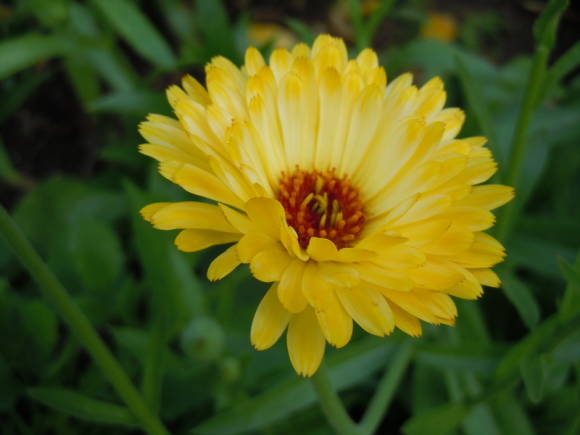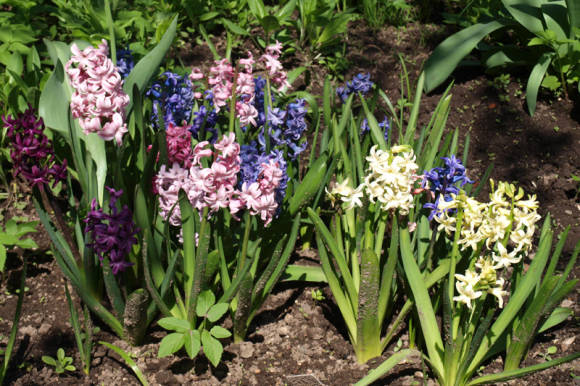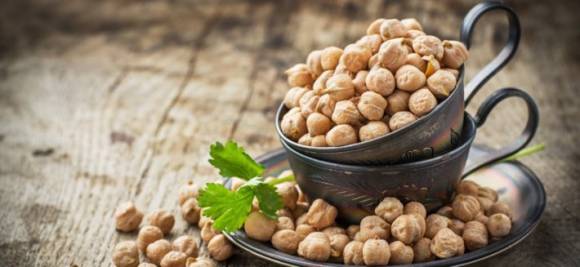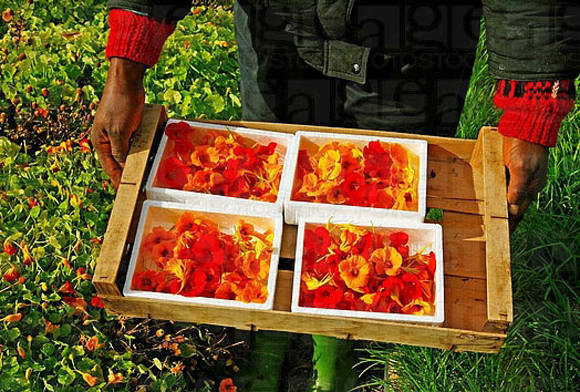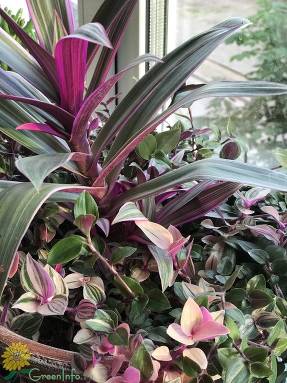The correct choice of the time for harvesting carrots determines the size of the crop, its quality and safety. In the last autumn days, sugar intensively accumulates in root crops, but if you overexpose carrots in the ground, then the vegetable will become bitter and tough. In order to determine the timing of harvesting, you need to pull out the root crop. If it is overgrown with small roots, then it's time to start cleaning.
Carrots are harvested in good weather, damaged roots are immediately thrown aside, because they are not suitable for storage. The tops must be cut off immediately, there is no need to unscrew them. If you leave even small petioles from the leaves, then the carrots will sprout.
 |
During harvesting, transportation and winter storage, carrots are a much more demanding crop than potatoes. It is very sensitive to mechanical damage, poorly heals damage, due to which, in the first place, various diseases develop. Roots of carrots that have been frozen and withered in the sun are also poorly stored.
There is no need to try to clean the root crops from the ground, as they receive mechanical damage. They should also not be washed before storing them, as the protective film on the peel is erased, as a result of which the penetration of microorganisms into the root crop, causing the decay process, is facilitated.
Prepared carrots are placed in boxes and left to cool for 5-6 days. And only after that, well-chilled root crops are transferred to storage, because chilled carrots more easily pass into a dormant period and consume less nutrients.
Many gardeners, before storing them, lightly spray the roots with an aqueous infusion of onions. To do this, 200 g of onions must be poured with 10 liters of hot water and insisted for 24 hours. But after such processing, the carrots must be dried well.
Only healthy, not withered or frost-bitten products can be put into the basement for storage. At the same time, it is advisable to store root crops of different ripening periods separately by varieties.
Carrots belong to root crops, demanding storage conditions. In addition, it more than other crops can be infected with diseases through the air. Unlike other root vegetables, it is very sensitive to temperature rise in the basement, especially during the initial storage period.
 |
That is why many gardeners are well aware of the feeling of annoyance when completely healthy carrots were laid for storage in the fall, and in winter most of the crop was "eaten" by rot.
Even with a very slight increase in temperature in the storage to + 4 ° C and a decrease in air humidity, the biological dormancy of carrots is already disturbed, and it begins to germinate and at the same time wither, which sharply reduces the keeping quality of root crops.
Therefore, both the storage and the root crops must be cooled immediately after the product is laid to the optimum temperature of 0 ... + 1 ° С, and when stored together with potatoes - up to + 1 ... + 2 ° С. The safety of carrots is also positively affected by the increased concentration of carbon dioxide in the air (3-5%).
Carrots are also very sensitive to air humidity, which must be constantly high (90–95%), otherwise the roots can fade and lose their resistance to diseases. Usually, when stored, carrots begin to deteriorate from the bottom of the root vegetable.
There is no consensus on how best to store carrots in storage. Carrots are often stored in tight boxes, sprinkling it on top with a small layer of wet sand... These boxes can be stacked up to 2 meters high.
The moisture content of the sand should be such that when squeezed in the hand, water does not ooze out of it, but the sand lump retains its shape. The sandy environment reduces the evaporation of moisture by root crops, provides an even temperature, the accumulation of carbon dioxide released by root crops, which has a beneficial effect on their safety - as if preserving them.
Sand also protects against diseases, including such dangerous ones as various rot. This is especially important for carrots, since it is the most difficult of all root crops to store it.
To prevent the development of diseases, it is advisable to add chalk or well-slaked lime to the sand in the amount of 1–2% of its volume. Poorly slaked lime mixed with wet sand can burn carrots, so the quality of the lime must be carefully monitored. The next year, the sand must be replaced with fresh one.
Carrots do not fade and are well stored in small stacks on the floor or racks... In this case, the roots are laid in rows in the form of a truncated pyramid, placing them with their head outward so that they do not touch each other. In this case, each row is sprinkled with wet sand with a layer of 2-3 cm, from above and along the edges, the thickness of this layer is brought to 5 cm.
As it dries, the top layer of sand must be moistened. In order to maintain the strength of such a "pyramid", it should not be stacked in more than 7 layers. On average, 3-4 buckets of sand are consumed per 100 kg of carrots.
But this method is very time consuming and requires a lot of space for the sand. In addition, not all gardeners have sand. This sand must be changed or calcined each time in order to destroy the pathogens of phomosis and gray rot. Therefore, now many gardeners store carrots. in plastic bags with a capacity of 40-50 kg (from under sugar), tied on top with a rope. It is advisable to make 10-15 holes with a diameter of 1 cm in them for the release of excess carbon dioxide.
In such bags, an almost optimal relative air humidity is created, as well as an optimal amount of oxygen and carbon dioxide (up to 4%), which contributes to the long-term preservation of root crops, suppressing the development of phytopathogenic organisms.
Such bags filled with carrots can be installed vertically with an open top without tying or poking holes. But if such a bag is accidentally closed, then excess carbon dioxide quickly accumulates in it, the oxygen content drops, and after 2-3 weeks the carrots will begin to rot.
Good results are obtained chalking or claying carrots... To do this, the roots are placed in a creamy clay mash or milk of lime, and then dried with increased ventilation. After drying on root crops, clay or lime forms a thin crust, which protects carrots well from wilting and various diseases. Then these carrots are placed in boxes.
Widely used and dry dusting of carrot root crops with chalk at the rate of 150 g of chalk per 10 kg of carrots. At the same time, the formed chalk layer creates a slightly alkaline environment on the surface of root crops, which prevents the development of diseases.
Carrot roots are well preserved, sprinkled with an aqueous infusion of onion husks or sprinkled with onion husks before laying. They also stay juicy and healthy when placed in the bin along with the potatoes.
 |
You can store carrots in the basement and in ordinary plastic bags with a capacity of 2-3 kg. To do this, they are filled with chilled carrots and immediately transferred to storage. Top of the carrot is covered with wet sand. Open packages are placed in 3-4 rows.
In winter, if diseased root crops are found, they are removed, and hands, before touching healthy root crops, must be washed with a solution of potassium permanganate or soap. With a significant development of white rot when storing carrots in the basement, it is advisable to temporarily lower the humidity by using fluff lime.
Recently, some gardeners have begun to use for storing carrots sphagnum moss, which is harvested in August. It is dried to a moisture content of about 7% (this moss is almost dry to the touch). This moss is used for interlayering carrots. With this storage, the roots do not get sick, do not wither, they are not damaged by mice, and the air in the basement is odorless, damp and rotten.
When storing carrots in piles or trenches root crops are interlayered with light loamy soil, and on top are covered with a layer of straw up to 60 cm thick. Then the earth is first covered with a layer up to 20 cm thick, and before the onset of frost, the thickness of the earth layer is brought to 35–40 cm.
Some gardeners leave few plants when harvesting carrots in autumn. winter in the garden for spring use, sprinkling the top of the bed with peat or dry leaves. But this can only be done in areas where the soil is not infected with a wireworm or bear. This is a very good old way of preserving carrots until spring.
Carrots dug out of the soil in spring are as fresh and juicy as dug out in autumn. However, such storage of carrots is possible only if it is not damaged by pests and diseases and is well protected from rodents, for which fresh carrots are a real treat.
But for wintering in the garden, the carrots must be well prepared. Before the onset of real frosts, it must be covered with dry leaves or peat chips and laid on top with spruce branches. Then you need to cover it with snow, slightly compacting it. And at the end of winter, you need to make sure that the snow lasts in the garden until spring.
Well, if you do not have a basement, then a small amount of carrots (8-10 kg) can be stored in a cardboard box... To do this, the carrots are laid in rows as tightly as possible, and for every 15–20 carrots, one medium horseradish rhizome is placed, which prevents diseases and promotes long-term storage of carrots.
The same result is obtained by using large perforated plastic bags... A box or bag of carrots should be placed in the coldest place in the room and occasionally inspected to remove rotten roots.
"Ural gardener", No. 38, 2015

